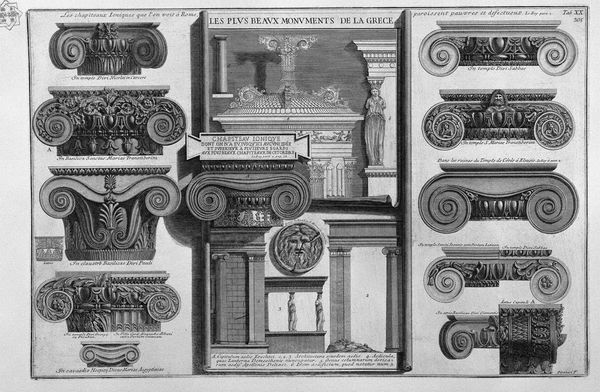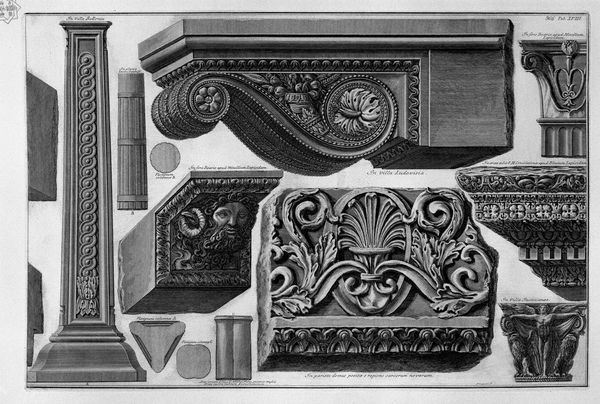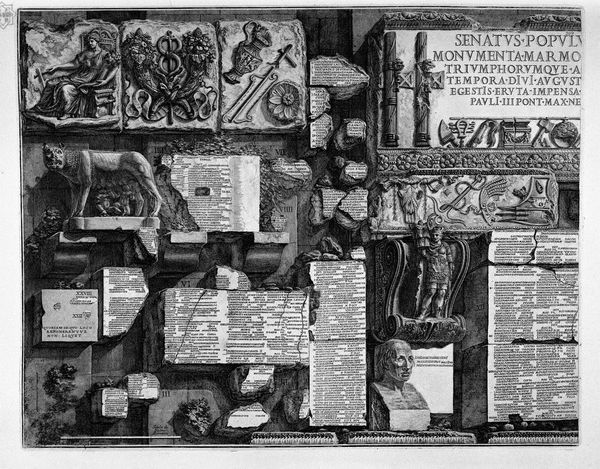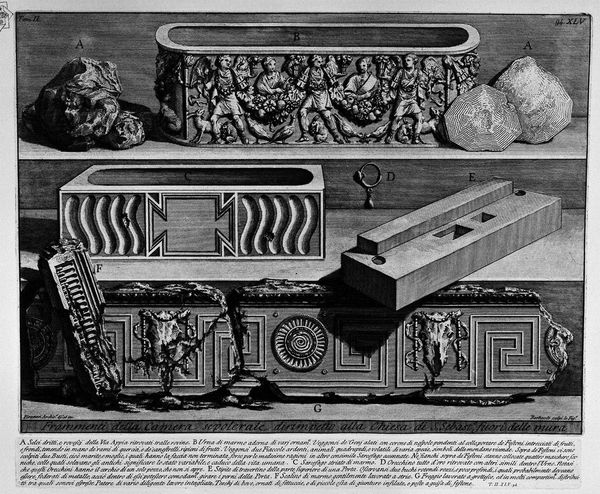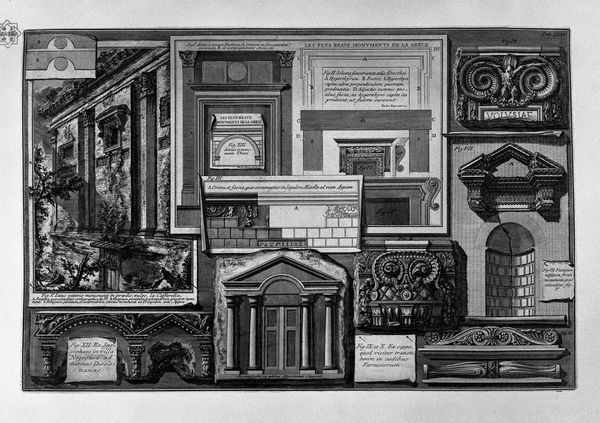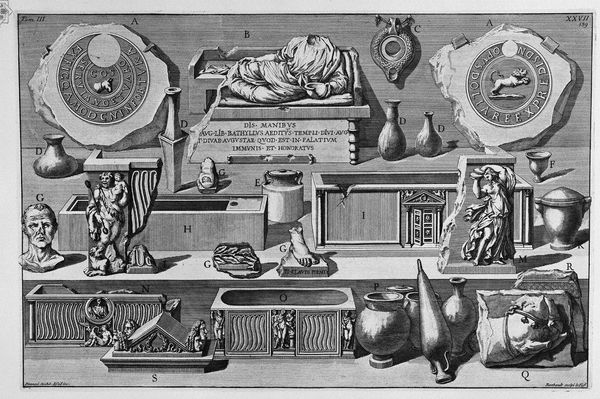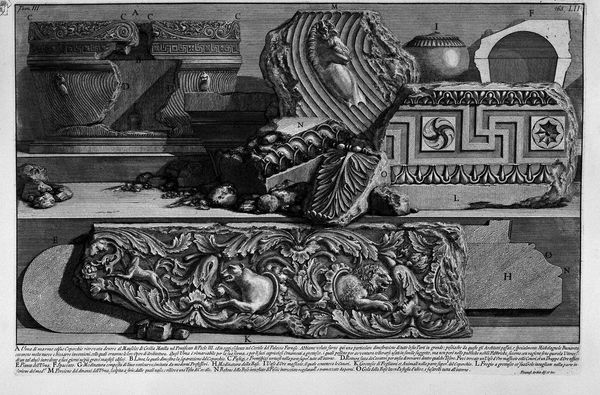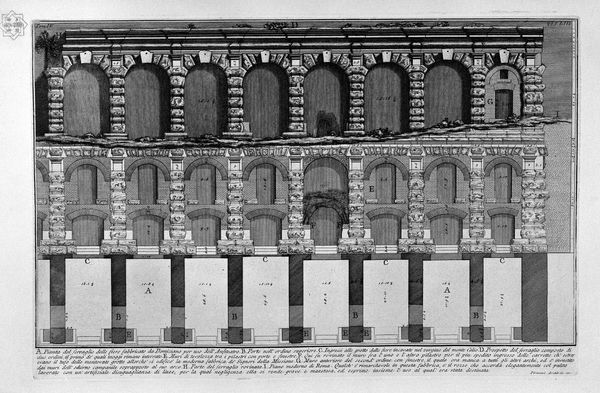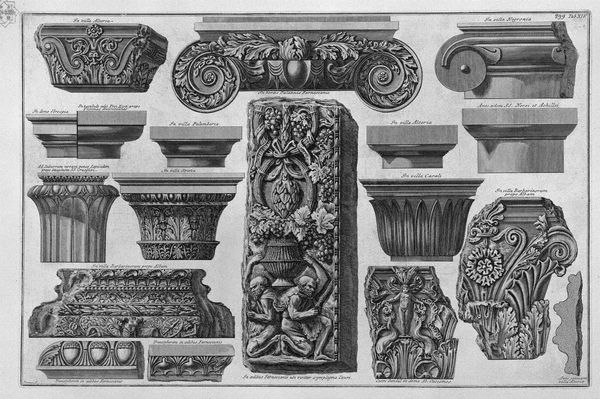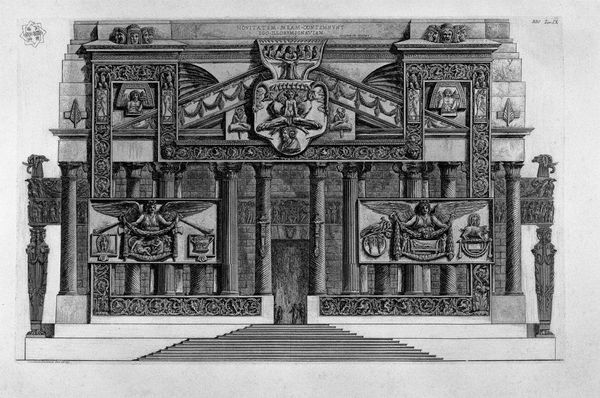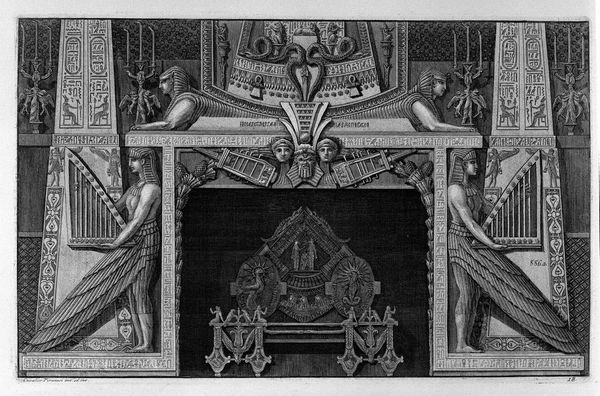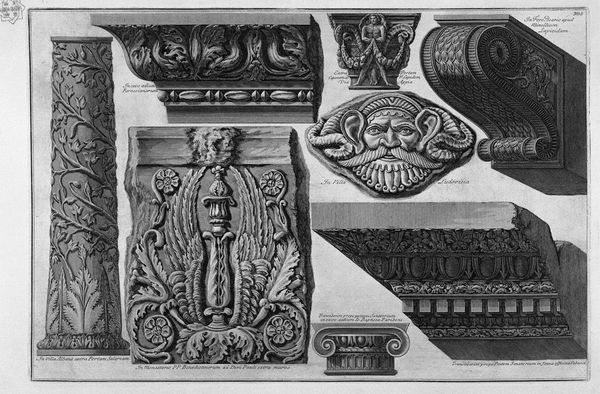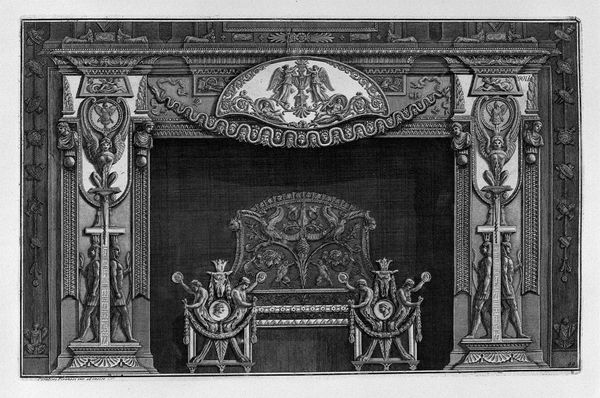
The Roman antiquities, t. 3, Plate XXVIII. Stones, sarcophagi and other objects found in burial chambers above.
0:00
0:00
graphic-art, print, engraving, architecture
#
graphic-art
# print
#
classicism
#
ancient-mediterranean
#
history-painting
#
engraving
#
architecture
Copyright: Public domain
Curator: Immediately, there's a striking rigidity, a formal ordering of the antique remnants captured in this engraving. The artist meticulously catalogues stones, sarcophagi, and funerary objects. The high contrast etching provides almost photographic detail. Editor: The mood for me is somber and a bit haunting. The precision somehow heightens the sense of loss, doesn't it? These are fragments, remnants, not as they were in life or even immediately after. More like shadows cast upon a museum wall. Curator: Precisely. Giovanni Battista Piranesi, in "The Roman Antiquities, t. 3, Plate XXVIII. Stones, sarcophagi and other objects found in burial chambers above" organizes these relics in neat rows and columns, lending an almost scientific air. Editor: Scientific maybe, but that dense arrangement also creates a sense of oppressive accumulation, a weight of history literally bearing down on the viewer. Is it to elevate or to mourn the passing of Ancient Rome? Curator: A fruitful point to consider. Notice the variations in texture achieved through the engraving technique. The smooth surfaces of the inscribed stone tablets contrast with the intricately carved sarcophagi, reflecting differing artistic values and historical epochs. Editor: I'm really drawn to the fragmented nature. These objects are unearthed, disturbed and out of context. Each little imperfection suggests lives interrupted and secrets untold. I sense something quite ghostly lingering about the print. Curator: The act of replication also affects its historical impact, doesn’t it? The dissemination of images of Roman artifacts would shape how the eighteenth-century and later publics thought about antiquity, what value they ascribed to it. Editor: Yes! And through his method, Piranesi preserves their appearance while the originals undergo the inevitable decay that haunts our attempts to reach backward across centuries. A mediation on both legacy and ephemerality, I think. Curator: A suitably poetic assessment. The lasting impact of such methodical engravings lies, finally, in prompting our emotional reckoning with historical remoteness and decay. Editor: I agree entirely. They're like pressed flowers between the pages of history, these prints. Still radiating fragrance, yet forever altered by time.
Comments
No comments
Be the first to comment and join the conversation on the ultimate creative platform.

